Delve into ancient Egypt's intricate interactions with adversaries such as Nubia, the Hyksos, Sea Peoples, Hittites, and Libyans. Learn how warfare, diplomacy, cultural exchanges, and the iconic symbolism of the 'Nine Bows' reinforced Egypt's sovereignty and shaped its identity.
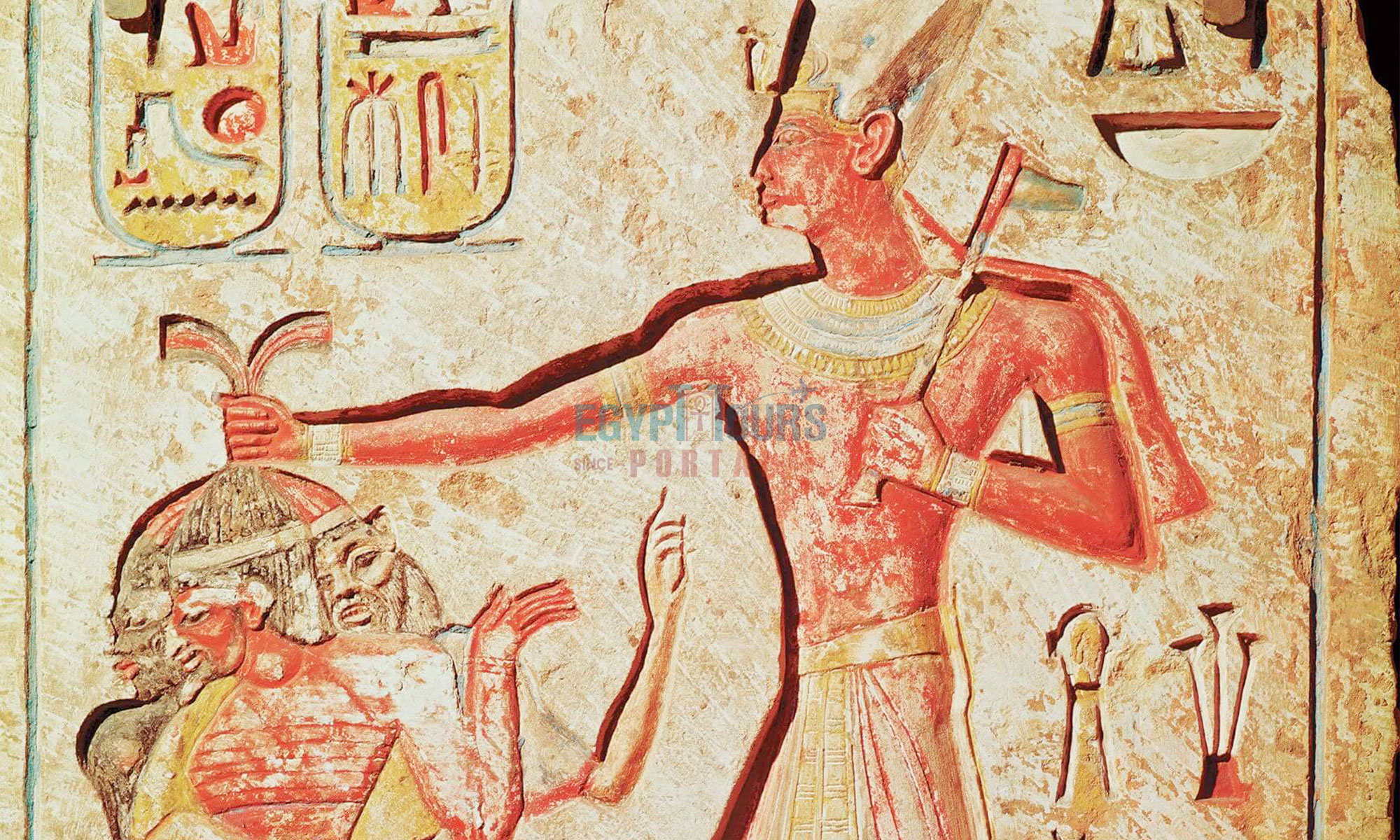
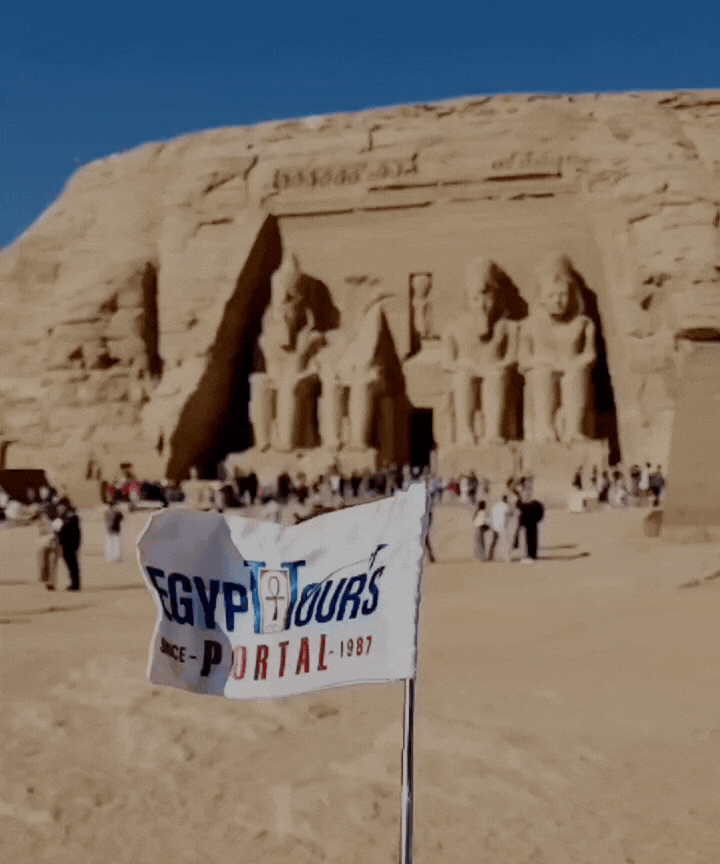
The Enemies of Ancient Egypt were a key factor in the rise and demise of this epic civilization. Ancient Egypt is one of the world's earliest and most enduring civilizations and was not isolated from the dynamic and often tumultuous interactions with its neighbors. Throughout its extensive history, Egypt engaged with various peoples and empires, ranging from allies and trading partners to formidable adversaries and invaders.
Understanding these relationships provides crucial insights into Egypt's political strategies, military innovations, cultural exchanges, and societal developments. This comprehensive exploration delves into the complex interactions between Egypt and its primary enemies, examining their historical contexts, representations in art, and lasting impacts on Egyptian society.

The relationship between ancient Egypt and Nubia, located to the south along the Nile River, was multifaceted, encompassing periods of both cooperation and conflict. Nubia was rich in resources such as gold, ivory, ebony, and exotic animals, making it a valuable region for trade and conquest.
Early Dynastic Period (c. 3100–2686 BCE): Initial interactions were primarily trade-based, with Egypt exporting goods like copper, pottery, and luxury items in exchange for Nubian resources. Archaeological evidence from sites like Abydos and Hierakonpolis indicates early trade relations.
Middle Kingdom (c. 2055–1650 BCE): Egypt expanded southward, establishing administrative centers and military outposts to control Nubian territories. Pharaoh Senusret III (c. 1878–1839 BCE) conducted military campaigns to assert dominance and secure resource access, as depicted in his famous White Chapel at Karnak.
New Kingdom (c. 1550–1070 BCE): Under rulers like Thutmose I (c. 1506–1493 BCE) and Thutmose III (c. 1479–1425 BCE), Egypt exerted greater control over Nubia, integrating it as a province. This period saw the establishment of the 15th and 16th Nubian dynasties, reflecting both administrative integration and occasional local autonomy.
Late Period and Ptolemaic Era (c. 664–30 BCE): Nubia occasionally revolted against Egyptian rule but also experienced periods of peaceful coexistence and cultural exchange. By the Ptolemaic period, Nubians held significant positions within the Egyptian administration and military, illustrating their integration into Egyptian society.
Nubians were depicted in Egyptian art and inscriptions with a blend of respect and enmity, reflecting their complex relationship.
Military Scenes: Nubians often appear as captured enemies, emphasizing Egypt's military prowess. Reliefs from the tomb of Senusret III at Lisht show Nubian prisoners bound and led away, symbolizing subjugation and control.
Artistic Representations: Despite their portrayal as adversaries, Nubians were also depicted in roles of importance, such as skilled archers and artisans. Statues from the New Kingdom, like those of Amenhotep III, sometimes feature Nubian attendants, highlighting their valued contributions to Egyptian society.
Symbolic Imagery: The term "Nine Bows" often included Nubians, representing the totality of Egypt's enemies. However, Nubians were sometimes shown in roles that suggested respect for their abilities and cultural significance, indicating a nuanced perception beyond mere enmity.
Explore the battles of Ancient Egypt where the enemies of Egypt suffered a great defeat.
Read More
The Hyksos were a group of mixed Semitic-Asiatics who invaded and ruled parts of Egypt during the Second Intermediate Period (c. 1650–1550 BCE), establishing the Fifteenth Dynasty.
Migration and Settlement: Originating from the Levant, the Hyksos migrated to Egypt during a period of political fragmentation and weakened central authority. They settled primarily in the Nile Delta region, founding their capital at Avaris (modern-day Tell el-Dab’a).
Establishment of the Fifteenth Dynasty: By around 1650 BCE, the Hyksos invasion had seized control of Lower Egypt, ruling as foreign pharaohs. Their governance introduced new administrative practices and military technologies to Egypt, including advanced chariotry and composite bows.
Conflict and Expulsion: Native Egyptian rulers from Thebes initiated military campaigns to reclaim their territory. King Ahmose I (c. 1550–1525 BCE) successfully expelled the Hyksos by around 1550 BCE, marking the beginning of the New Kingdom and a period of renewed Egyptian power and expansion.
The Hyksos brought significant technological advancements that had lasting impacts on Egyptian society.
Horse-Drawn Chariots: One of the most notable introductions was the horse-drawn chariot, which revolutionized Egyptian warfare. This technology enhanced mobility, speed, and tactical flexibility on the battlefield.
Composite Bows: The Hyksos introduced more powerful composite bows, allowing archers to deliver greater force and accuracy, which became a staple in the Egyptian military.
Bronze Weapons and Armor: Enhanced metallurgical techniques brought by the Hyksos led to the production of superior bronze weapons and armor, improving the effectiveness of Egyptian troops.
Cultural Influences: The Hyksos also influenced Egyptian art, pottery, and religious practices, leading to a blend of cultural elements that enriched Egyptian civilization. For example, motifs seen in Hyksos artifacts were incorporated into Egyptian designs, reflecting a synthesis of styles.
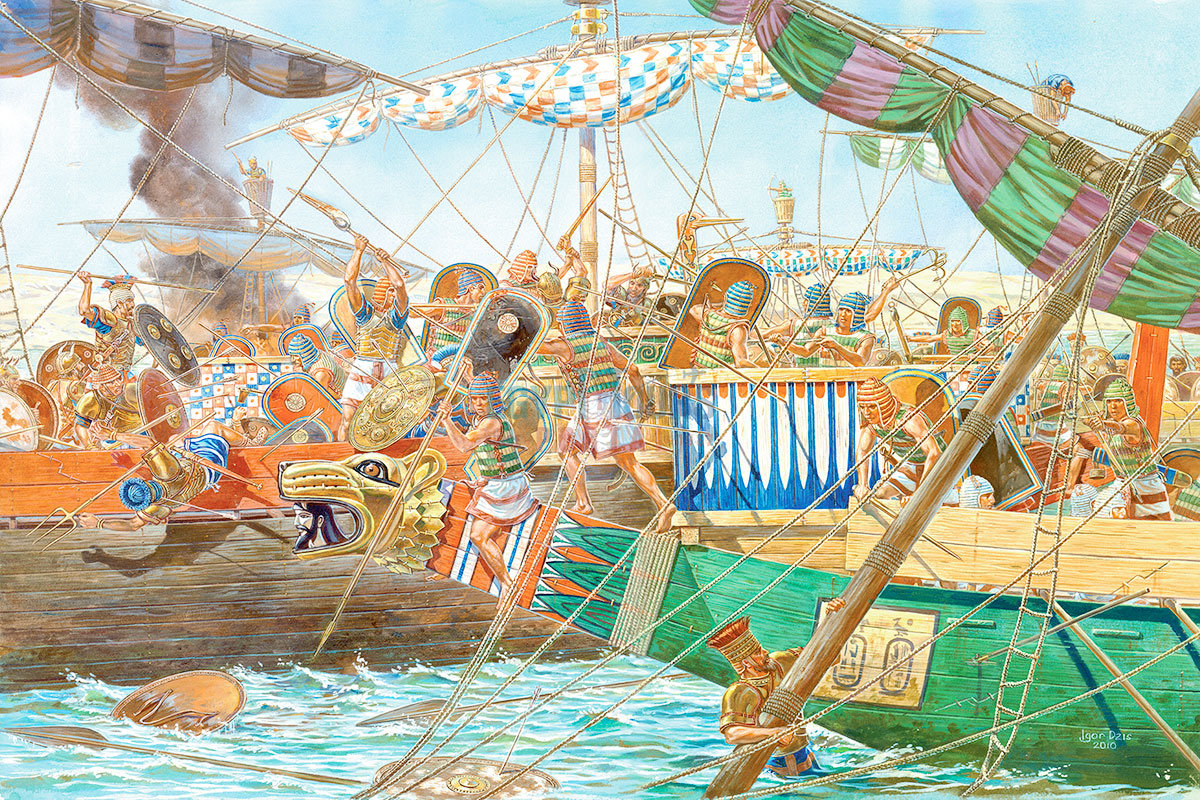
The Sea Peoples were a confederation of naval raiders who attacked ancient Egypt and other regions of the Eastern Mediterranean during the Late Bronze Age collapse (c. 1200–1150 BCE).
Origins and Composition: The exact origins of the Sea Peoples remain debated, with theories suggesting they originated from various regions, including the Aegean, Anatolia, and possibly the central Mediterranean. Groups such as the Sherden, Sheklesh, Lukka, Tursha, and Akawasha are commonly associated with the Sea Peoples.
Migration Patterns: Multiple waves of Sea Peoples migrated and invaded, driven by factors like climate change, famine, political instability, and the collapse of major empires like the Hittites and Mycenaean Greece.
The Sea Peoples posed a significant threat to Egypt, leading to intense military engagements.
Battle of the Delta (c. 1175 BCE): Ramesses III famously repelled the Sea Peoples in a decisive battle depicted on the walls of his mortuary temple at Medinet Habu. The reliefs show Ramesses III leading his troops against the invaders, demonstrating strategic military responses to unprecedented threats.
Defense Strategies: Egyptians utilized fortified positions, strategic reserves, and coordinated naval and land forces to counter the Sea Peoples. The integration of chariotry and infantry proved effective in repelling these invasions.
Aftermath and Legacy: Although some Sea Peoples were defeated, their invasions contributed to the broader Late Bronze Age collapse, leading to the fall of several Eastern Mediterranean civilizations and the eventual rise of new powers like the Philistines in the Levant. The Sea Peoples' legacy is reflected in the disruption of trade networks and the political reshaping of the region.
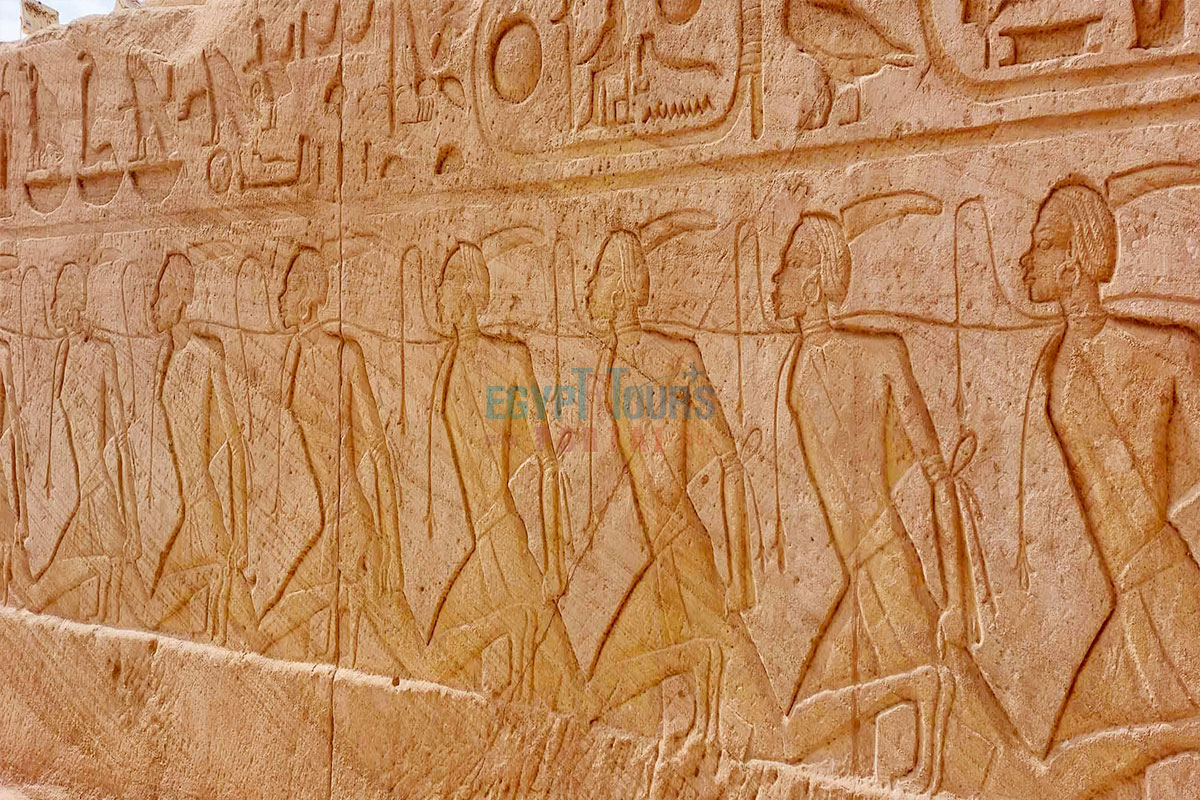
The Hittite Empire, centered in Anatolia (modern-day Turkey), was one of Egypt's most formidable rivals in the Near East.
Early Interactions: Initial contacts were marked by both conflict and diplomacy. Trade relations existed alongside territorial disputes, particularly over regions like Syria and Canaan.
Battle of Kadesh (c. 1274 BCE): One of the most significant confrontations between Egypt and the Hittites, this battle between Ramses II and Muwatalli II was one of the largest chariot battles in history. Although the battle itself was inconclusive, it led to one of the earliest known peace treaties around 1258 BCE, establishing a lasting diplomatic relationship.
Peace Treaty and Diplomacy: The Treaty of Kadesh outlined mutual boundaries and agreements on trade, setting a precedent for future diplomatic relations in the ancient world. This treaty demonstrated the Egyptians' and Hittites' willingness to coexist peacefully after prolonged conflict, fostering stability in the region.
Interactions between Egypt and the Hittites facilitated significant cultural and technological exchanges.
Art and Architecture: Both civilizations influenced each other’s artistic styles, incorporating elements like lion hunt motifs and architectural features. Shared artistic themes reflected mutual respect and acknowledgment of each other's prowess.
Language and Administration: Diplomatic correspondence, such as the Amarna Letters, shows exchanges in language, administrative practices, and mutual recognition of sovereignty. This bilingual communication fostered a deeper understanding and collaboration between the two empires.
Technological Innovations: The exchange of military technologies, including chariot designs and weaponry, enhanced the capabilities of both civilizations. The Hittites' expertise in ironworking also influenced Egyptian metallurgy, leading to the production of stronger and more durable weapons.

Libyans, known to the Egyptians as the Tjehenu or Tjemehu, were a semi-nomadic people from the regions west of Egypt.
Early Conflicts: From the Old Kingdom (c. 2686–2181 BCE) onward, Egypt faced repeated incursions from Libyan tribes. Pharaohs like Snefru (c. 2613–2589 BCE) and Sahure (c. 2487–2475 BCE) conducted military campaigns to repel these invaders, emphasizing the ongoing threat they posed.
New Kingdom Challenges: During the New Kingdom, particularly under Ramesses II (c. 1279–1213 BCE) and Ramesses III (c. 1186–1155 BCE), Egypt had to defend against significant Libyan invasions. These tribes sought control over Egypt’s western borders, leading to continuous military engagements. For instance, Ramesses III's mortuary temple at Medinet Habu vividly depicts battles against Libyan forces, showcasing the pharaoh's military might and the persistent threat posed by these tribes.
Integration and Assimilation: Despite their repeated invasions, many Libyans were eventually integrated into Egyptian society. By the Late Period (c. 664–332 BCE), Libyan tribes settled in Egypt, forming the Meshwesh group, which even gained political power during the 22nd Dynasty. Pharaohs like Shoshenq I (c. 945–924 BCE) and Piye (c. 747–716 BCE) were of Libyan descent, illustrating their assimilation and influence within the Egyptian political landscape.
Libyans were frequently depicted in Egyptian art and inscriptions, often embodying the archetypal enemy.
Artistic Representations: Libyans were portrayed as dark-skinned and bearded, sometimes with fair hair and blue eyes, highlighting their distinct appearance. Reliefs from the mortuary temples of Pharaohs Snefru, Sahure, and later Ramesses II show Libyan chiefs being subdued by Egyptian forces, reinforcing their role as perennial adversaries.
Symbolic Imagery: Libyans were often depicted with weapons like axes and bows, emphasizing their martial nature. Scenes of Ramesses II with Libyan captives underlined his military prowess and the pharaoh's role as the defender of Egypt against Western threats.
Military Campaigns: Textual records from the reigns of Merneptah (c. 1213–1203 BCE) and Ramesses III detail punitive campaigns against Libyan tribes, aiming to secure Egypt's western borders. These campaigns were crucial in maintaining Egypt's territorial integrity and access to vital resources.
Social Integration: Despite their depiction as enemies, over time, Libyans became an integral part of Egyptian society. By the 22nd Dynasty, Libyan rulers had established their authority in Egypt, demonstrating the complex interplay between conflict and assimilation.
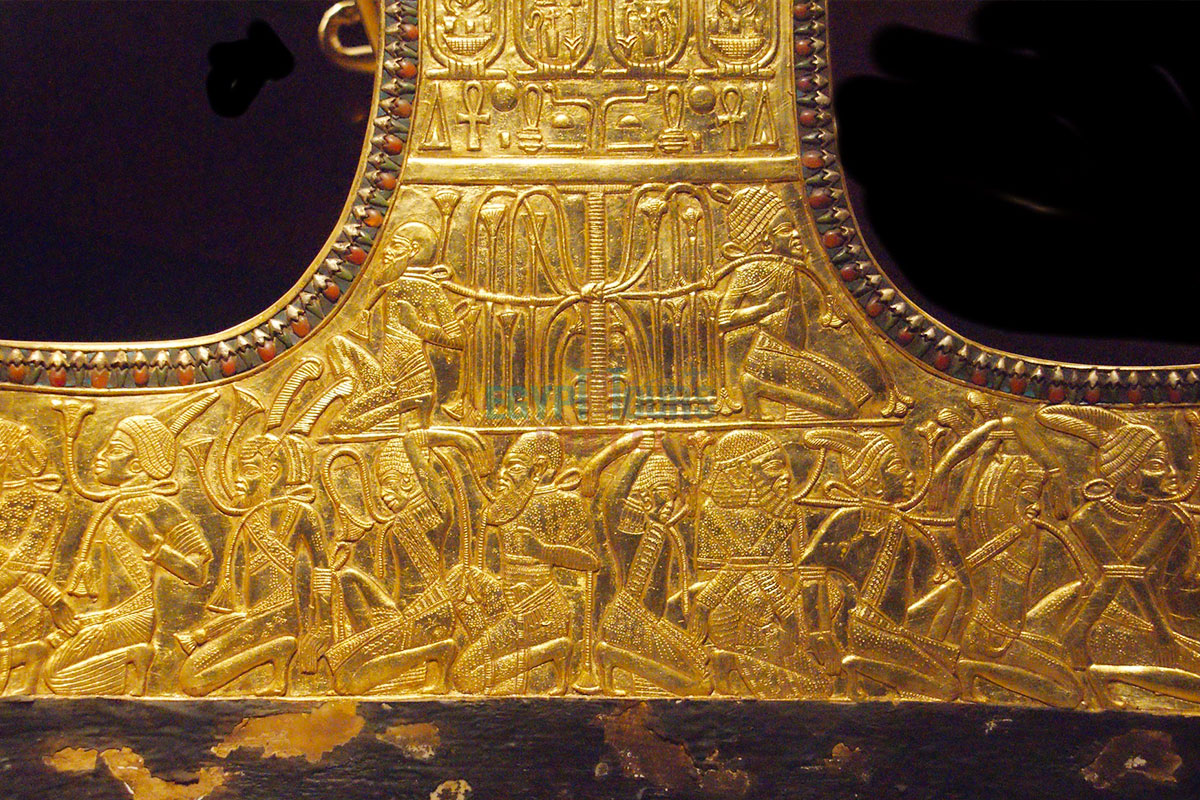
The "Nine Bows" was a pervasive motif in ancient Egyptian art and symbolism, representing all of Egypt's traditional foes.
Origin and Meaning: The term "Nine Bows" did not refer to nine specific enemies but rather served as a generic symbol for foreign adversaries. The number nine, often associated with totality and completeness in Egyptian numerology, underscored the idea of encompassing all enemies. The bow, a common weapon among Egypt's foes, was central to this symbol.
Hieroglyphic Representation: In Egyptian hieroglyphs, the "Nine Bows" were depicted as a bow accompanied by three sets of three vertical lines, symbolizing plurality. This imagery abstractly represented the totality of Egypt's enemies without naming specific groups.
Dual Symbolism: Beyond representing foreign adversaries, the "Nine Bows" also symbolized chaos, contrasting with the Egyptian ideals of order (Maat). This duality reinforced the king's role in maintaining cosmic balance by subduing both external threats and internal disorder.
The "Nine Bows" were a recurring element in Egyptian art, used to signify the pharaoh's dominance and the restoration of order.
Placement in Art: Commonly found beneath the feet of pharaohs, statues, and sphinxes, the "Nine Bows" symbolized the ruler's authority over all enemies. For example, in Tutankhamun's tomb, a footstool adorned with the "Nine Bows" depicted the king trampling his adversaries, reinforcing his supremacy.
Iconography in Objects: The "Nine Bows" were also featured on everyday objects like the handle of Tutankhamun's cane and the insoles of royal sandals. These depictions served as constant reminders of the pharaoh's power and the eternal struggle between order and chaos.
Symbolic Rituals: Ritualistic artifacts, such as the Execration Texts, incorporated the "Nine Bows" to invoke magical protection against enemies. These texts listed names of foes and were inscribed on broken pottery and figurines, symbolically destroying the enemies through ritual means.
Ancient Egypt upheld its sovereignty and cultural identity through alliances and conflicts with Nubia, Hyksos, Sea Peoples, Hittites, and Libyans. The "Nine Bows" symbolized its dominance and the struggle between order and chaos, reinforced by pharaohs through art and rituals. Archaeological discoveries like chariots and temple reliefs highlight Egypt's advanced military and diplomatic strategies.
These interactions showcase the strategic brilliance of Egyptian rulers and the significant cultural exchanges that shaped this remarkable civilization. Make friends and incredible memories with our marvelous Egypt tour packages from India and Nile Cruise which will show the very best of ancient and modern Egypt.
Private 4 Days Cairo Tour Packages for Indian Travelers 4 days Cairo Egypt Tour pack...
Tour Location: Cairo – Giza...
5 Days Cairo and Alexandria Tour Package For Indian Travelers 5 days Cairo and Alexa...
Tour Location: Cairo/Giza/Alexandria...
6 Days Cairo, Luxor & Aswan Tour Package For Indian Travelers 6 days Cairo, Luxo...
Tour Location: Cairo/Giza/Aswan/Luxor...
Amazing 7 Days Cairo and Hurghada Holiday for Indian Travelers 7 Days Cairo & Hu...
Tour Location: Cairo – Giza – Hurgh...
Ancient Egypt's Main Adversaries Included the Nubians to the South, the Hyksos Who Invaded During the Second Intermediate Period, the Sea Peoples During the Late Bronze Age, the Hittites in the Near East, and the Libyans From the West. Additionally, the Symbolic "Nine Bows" Represented All of Egypt's Enemies Collectively.
The Hyksos Were a Group of Mixed Semitic Asiatics Who Invaded and Ruled Parts of Egypt During the Second Intermediate Period (C. 1650–1550 Bce), Establishing the Fifteenth Dynasty. They Introduced Advanced Technologies Like Horse-drawn Chariots and Composite Bows, Significantly Influencing Egyptian Military Practices Before Being Expelled by Pharaoh Ahmose I.
The Sea Peoples Were a Confederation of Naval Raiders Who Attacked Egypt and Other Eastern Mediterranean Regions Around 1200–1150 Bce. Their Invasions Contributed to the Late Bronze Age Collapse, but Pharaoh Ramesses Iii Successfully Repelled Them in Battles Depicted on His Mortuary Temple at Medinet Habu, Ensuring Egypt's Survival and Continued Dominance.
Nubians, Located to the South of Egypt Along the Nile River, Had a Complex Relationship With Egypt, Ranging From Trade and Alliances to Warfare and Conquest. They Were Valued for Their Resources Like Gold and Ivory and Were Integrated Into Egyptian Society, Especially During the New Kingdom When Nubia Became a Province Under Strong Egyptian Control.
The Hittite Empire, Centered in Anatolia (modern-day Turkey), Was One of Egypt's Significant Rivals in the Near East. Their Interactions Included Both Fierce Battles, Such as the Battle of Kadesh (C. 1274 Bce), and Diplomatic Efforts, Culminating in One of the Earliest Known Peace Treaties Around 1258 Bce, Which Established Lasting Diplomatic Relations.
The "Nine Bows" Was a Symbolic Motif in Ancient Egyptian Art Representing All of Egypt's Enemies Collectively. It Symbolized Egypt's Dominance Over Foreign Adversaries and the Cosmic Struggle Between Order and Chaos. Often Depicted Beneath the Feet of Pharaohs and Gods, the "Nine Bows" Reinforced the Ruler's Authority and the Nation's Resilience Against External Threats.
Libyans, Known as the Tjehenu or Tjemehu, Were Semi-nomadic Tribes From the West of Egypt. They Frequently Invaded Egyptian Territory From the Old Kingdom Onward, Leading to Continuous Military Engagements. Over Time, Many Libyans Were Assimilated Into Egyptian Society, and by the 22nd Dynasty (C. 943–716 Bce), Libyan Rulers Even Controlled Egypt, Demonstrating Their Significant Influence.
The Battle of Kadesh (C. 1274 Bce) Was a Major Confrontation Between Pharaoh Ramses Ii of Egypt and King Muwatalli Ii of the Hittites. It is One of the Earliest Well-documented Large-scale Chariot Battles in History. Although the Battle Ended Inconclusively, It Led to the Signing of the Treaty of Kadesh Around 1258 Bce, One of the First Known Peace Treaties, Establishing Diplomatic Relations Between Egypt and the Hittite Empire.
The Hyksos Introduced Advanced Military Technologies to Egypt, Including Horse-drawn Chariots and Composite Bows. These Innovations Enhanced Egypt's Military Capabilities, Allowing for Greater Mobility, Speed, and Effective Archery in Warfare. The Egyptians Adopted and Further Refined These Technologies, Which Became Central to Their Military Strategy During the New Kingdom.
Archaeological Discoveries Such as Chariots in Tutankhamun's Tomb, Detailed Temple Reliefs at Medinet Habu Depicting Battles With the Sea Peoples, and Artifacts From Hyksos Settlements at Tell El-dab’a Provide Tangible Evidence of Egypt's Interactions With Its Enemies. These Findings Offer Insights Into Military Practices, Cultural Exchanges, and the Depiction of Adversaries in Egyptian Art and Inscriptions.
Foreigners and Enemies Were Often Depicted as Bound Captives, Prostrate Figures, or Facing Defeat. Artistic Representations Emphasized Their Subjugation and the Pharaoh's Dominance. Scenes From Tomb Paintings, Temple Reliefs, and Statues Frequently Show Enemies Being Trampled Under the Feet of Pharaohs or Gods, Reinforcing the Theme of Egyptian Supremacy.
Yes, One of the Most Notable Peace Treaties Was the Treaty of Kadesh Between Egypt and the Hittite Empire Around 1258 Bce. This Treaty Established Mutual Boundaries and Trade Agreements, Setting a Precedent for Future Diplomatic Relations in the Ancient World. It Marked a Significant Shift From Perpetual Warfare to Diplomacy and Coexistence Between Major Empires.
The Invasions by the Sea Peoples Were a Contributing Factor to the Late Bronze Age Collapse, Which Saw the Fall of Several Major Civilizations in the Eastern Mediterranean. Their Raids Disrupted Trade Networks, Weakened Existing Powers, and Led to Widespread Destruction. However, Egypt Managed to Withstand These Invasions, Thanks to Effective Military Strategies and Strong Leadership Under Pharaoh Ramesses Iii.
Cultural Exchanges Between Egypt and Its Enemies Occurred Through Trade, Warfare, Diplomacy, and Assimilation. For Example, the Hyksos Introduced New Technologies and Artistic Styles, Which Were Adopted and Adapted by the Egyptians. Similarly, Diplomatic Relations With the Hittites Led to Exchanges in Language, Administration, and Art, Enriching Both Civilizations.
The Enemies of Ancient Egypt Left a Lasting Legacy Through Military Innovations, Cultural Exchanges, and Symbolic Representations in Art and Mythology. Technologies Like the Chariot and Composite Bow Were Adopted and Refined by the Egyptians, Enhancing Their Military Prowess. Additionally, the Depiction of Enemies in Art Reinforced Pharaonic Authority and the Ideals of Order Over Chaos, Shaping Egypt's Cultural and Ideological Landscape for Centuries.
The entire country of Egypt deserve to be explored with its every heavenly detail but there are places that must be seen before any other such as the breathtaking Hurghada's red sea, The wonders of Cairo the pyramids of Giza, the great sphinx, the Egyptian Museum, Khan El Khalili Bazaar, the wonders of Luxor like Valley of the Kings, Karnak & Hatshepsut temple and the wonders of Aswan such as Abu Simbel temples, Philea temple, Unfinished obelisk and The Wonders of Alexandria like Qaitbat Citadel, Pompey's Pillar and Alexandria Library. Read more about the best places to visit in Egypt.
If you want to apply for a Visa On Arrival that lasts for 30 days then you should be one of the eligible countries, have a valid passport with at least 6 months remaining and pay 25$ USD in cash, as for the E-Visa for 30 day you should have a valid passport for at least 8 months, complete the online application, pay the e-visa fee then print the e-visa to later be presented to the airport border guard. You could also be one of the lucky ones who can obtain a free visa for 90 days. Read more about Egypt travel visa.
Egypt has a variety of delicious cuisines but we recommend “Ful & Ta’meya (Fava Beans and Falafel)”, Mulukhiya, “Koshary”, a traditional Egyptian pasta dish, and Kebab & Kofta, the Egyptian traditional meat dish.
The best time to travel to Egypt is during the winter from September to April as the climate becomes a little tropical accompanied by a magical atmosphere of warm weather with a winter breeze. You will be notified in the week of your trip if the Climate is unsafe and if any changes have been made.
You should pack everything you could ever need in a small bag so you could move easily between your destinations.
We have been creating the finest vacations for more than 20 years around the most majestic destinations in Egypt. Our staff consists of the best operators, guides and drivers who dedicate all of their time & effort to make you have the perfect vacation. All of our tours are customized by Travel, Financial & Time consultants to fit your every possible need during your vacation. It doesn't go without saying that your safety and comfort are our main priority and all of our resources will be directed to provide the finest atmosphere until you return home.
You will feel safe in Egypt as the current atmosphere of the country is quite peaceful after the government took powerful measures like restructuring the entire tourist police to include all the important and tourist attractions in Egypt. Read more about is it safe to travel to Egypt.
Wear whatever feels right and comfortable. It is advised to wear something light and comfortable footwear like a closed-toe shoe to sustain the terrain of Egypt. Put on sun block during your time in Egypt in the summer to protect yourself from the sun.
The best activity is by far boarding a Nile Cruise between Luxor and Aswan or Vise Versa. Witness the beauty of Egypt from a hot balloon or a plane and try all the delicious Egyptian cuisines and drinks plus shopping in old Cairo. Explore the allure and wonders of the red sea in the magical city resorts of Egypt like Hurghada and many more by diving and snorkeling in the marine life or Hurghada. Behold the mesmerizing western desert by a safari trip under the heavenly Egyptian skies.
There are a lot of public holidays in Egypt too many to count either religious or nation, the most important festivals are the holy month of Ramadan which ends with Eid Al Fitr, Christmas and new years eve. Read more about festivals & publich holidays in Egypt.
Egypt is considered to be one of the most liberal Islamic countries but it has become a little bit conservative in the last couple of decades so it is advised to avoid showing your chest, shoulders or legs below the knees.
Arabic is the official language and Most Egyptians, who live in the cities, speak or understand English or at least some English words or phrases. Fewer Egyptians can speak French, Italian, Spanish, and German. Professional tour guides, who work in the tourism sector, are equipped to handle visitors who cannot speak Arabic and they will speak enough English and other languages to fulfill the needs of all our clients.
The fastest way is a car, of course, a taxi. If you are in Cairo ride a white taxi to move faster or you could board the fastest way of transportation in Egypt metro if the roads are in rush hour.
The temperature in Egypt ranges from 37c to 14 c. Summer in Egypt is somehow hot but sometimes it becomes cold at night and winter is cool and mild. The average of low temperatures vary from 9.5 °C in the wintertime to 23 °C in the summertime and the average high temperatures vary from 17 °C in the wintertime to 32 °C in the summertime. The temperature is moderate all along the coasts.
It is the home of everything a traveler might be looking for from amazing historical sites dating to more than 4000 years to enchanting city resorts & beaches. You will live the vacation you deserve as Egypt has everything you could possibly imagine.









